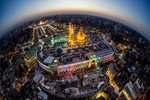Speaking about the alleged 400 kilograms of uranium enriched to 60%, which Tehran allegedly presumably had, Grossi said: "We don't know where this material could be."
"Some could have been destroyed as part of the attack, but some could have been moved. So there has to be at some point a clarification," the IAEA chief claimed, TASS reported.
Earlier, CNN reported, citing sources, that the US intelligence community believes that American strikes on Iran did not destroy the main components of the country's nuclear program.
While the Zionist regime waged a war of aggression against Iran on June 13 and struck Iran’s military, nuclear, and residential areas for 12 days, the US stepped in and conducted military attacks on three nuclear sites in Iran’s Natanz, Fordow, and Isfahan on June 22.
The Iranian military forces conducted powerful counterattacks immediately after the aggression. The Islamic Revolution Guards Corps Aerospace Force carried out 22 waves of retaliatory missile strikes against the Zionist regime as part of Operation True Promise III, which inflicted heavy losses on cities across the occupied territories.
A ceasefire that came into force on June 24 has brought the fighting to a halt.
Hamid Reza Haji Babaei, Vice Speaker of the Iranian Parliament, said on Saturday that Iran will no longer allow Rafael Grossi, the Director General of the International Atomic Energy Agency (IAEA), or the installation of surveillance cameras at its nuclear facilities.
Iran’s decision stems from the discovery of sensitive facility data within documents obtained from the Israeli regime, according to him.
MNA/
























Your Comment